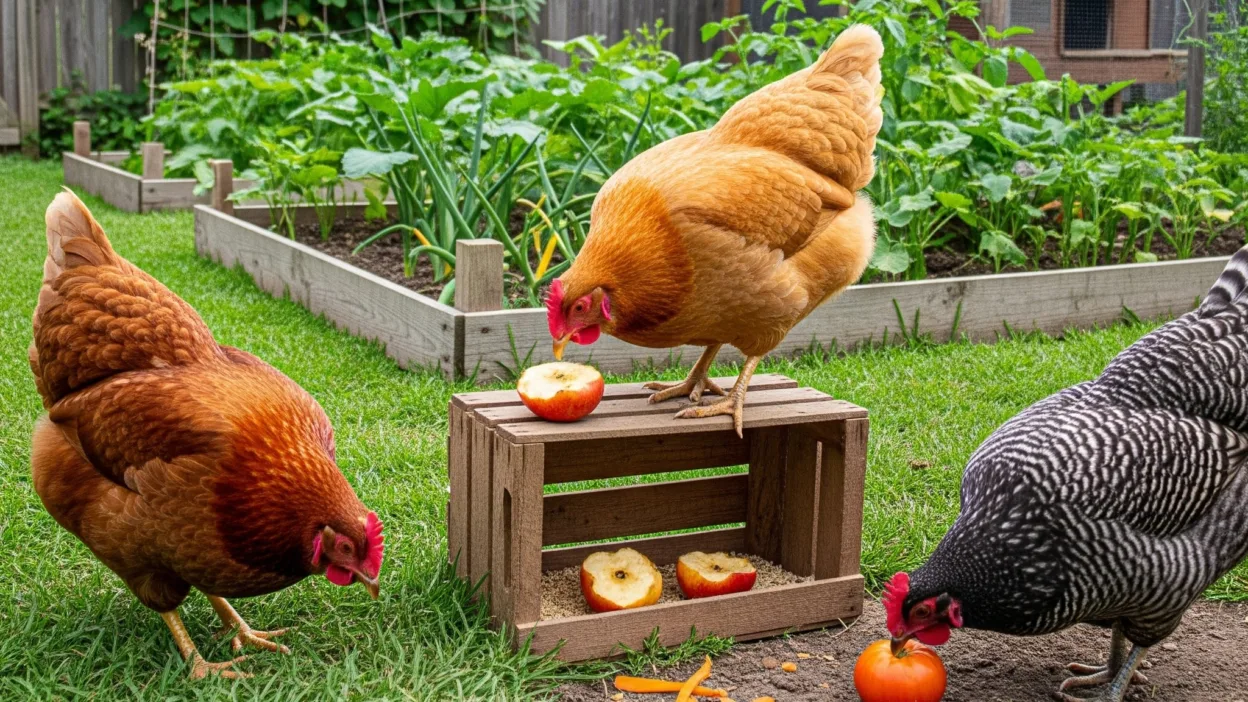Feeding backyard hens doesn’t have to be expensive. With smart planning, you can cut down on your monthly feed costs while keeping your flock healthy and productive. Whether you’re raising chickens in a suburban backyard or starting a small homestead, this guide will show you practical and cost-effective ways to feed your hens without compromising on nutrition.
Why Feeding Chickens on a Budget Is Important
Rising feed costs can quickly turn a budget-friendly backyard hobby into a pricey routine. On average, a laying hen eats around 1.5 to 2 pounds of feed per week. For a small flock of five hens, that can add up to over 40 pounds a month.
By reducing feed waste, incorporating scraps, and finding low-cost alternatives, you can save money while still producing fresh, healthy eggs.
1. Let Your Hens Free-Range (Even Part-Time)
Free-ranging is one of the easiest ways to reduce feed needs. When allowed to roam safely, chickens will eat:
- Insects and grubs
- Grass and weeds
- Seeds and small plants
This natural foraging can replace 25% to 50% of their daily feed needs, depending on your yard and climate. Even supervised free-range sessions in the morning or evening can make a noticeable difference in your feed bill.
2. Use Safe Kitchen Scraps
Feeding hens food scraps reduces waste and lowers feed costs. Good examples of safe scraps include:
- Vegetable and fruit peels
- Cooked pasta, rice, or oatmeal
- Stale bread
- Corn cobs and husks
- Crushed eggshells (added calcium)
Avoid giving them salty foods, chocolate, avocado, raw potato peels, or anything spoiled. Scraps should supplement, not fully replace, their main feed.
3. Buy Feed in Bulk
Purchasing feed in large 40 or 50 lb bags is significantly cheaper per pound than smaller bags. For deeper discounts:
- Look for local farm supply stores or agricultural co-ops
- Compare prices across feed types (pellets, crumbles, or mash)
- Store bulk feed in airtight containers to prevent moisture or rodent damage
If you have a small flock, consider splitting a large bag with a neighbor or friend who also keeps chickens.
4. Grow Your Own Chicken Feed Crops
Planting crops specifically for your chickens can reduce reliance on commercial feed. High-yield, chicken-friendly crops include:
- Sunflowers (for seeds)
- Kale and leafy greens
- Pumpkins and squash
- Amaranth and clover
- Corn (as a treat or supplement)
You can also grow herbs like mint, oregano, and basil, which offer health benefits and improve digestion.
5. Supplement With Fermented Feed
Fermenting commercial feed increases its nutritional value and helps chickens absorb nutrients more efficiently. This allows you to:
- Feed less while keeping hens full longer
- Improve egg production and shell quality
- Reduce waste (less uneaten feed)
Soak feed in water for 24–48 hours, then strain and serve. It’s a small effort with big returns.
6. Offer Leftover Garden Produce
If you maintain a vegetable garden, don’t waste trimmings and extras. Chickens will happily eat:
- Overripe tomatoes
- Lettuce and cabbage leaves
- Pea pods and beet greens
- Cucumber ends and squash vines
This is especially helpful during peak garden season when surplus produce is abundant.
7. Mix Your Own Feed (Optional)
Once you’re comfortable with chicken nutrition, you can experiment with homemade feed blends using ingredients like:
- Cracked corn
- Black oil sunflower seeds
- Oats and barley
- Split peas or lentils
- Brewer’s yeast and kelp meal (for added minerals)
This approach requires research to ensure balanced nutrition but offers long-term savings and customization.
8. Avoid Overfeeding and Reduce Waste
Overfeeding is a common mistake. Feed should be offered in measured amounts and stored properly to avoid spoilage or theft by rodents or wild birds. Tips to reduce waste include:
- Use hanging or treadle feeders
- Feed during cooler hours to reduce spoilage
- Clean up uneaten food daily
Keeping feed dry and secure can significantly reduce costs over time.
Final Thoughts: Feed Smarter, Not More Expensively
Feeding backyard hens on a budget is completely doable with the right approach. From free-ranging and scraps to bulk buying and garden integration, each small change adds up to big savings. As a bonus, many of these methods lead to healthier, happier chickens and better-quality eggs.
Backyard chickens don’t need expensive routines, just consistent care, common-sense nutrition, and a little creativity.



